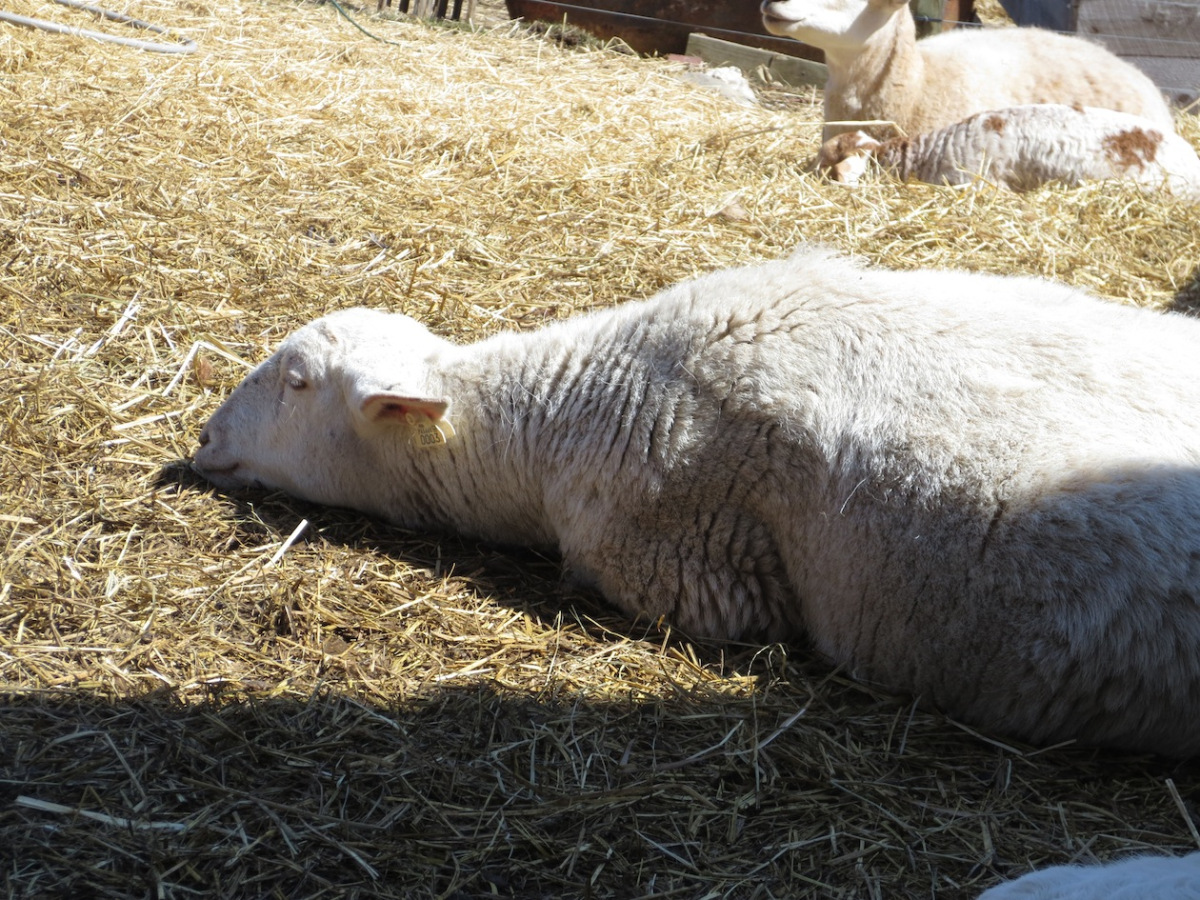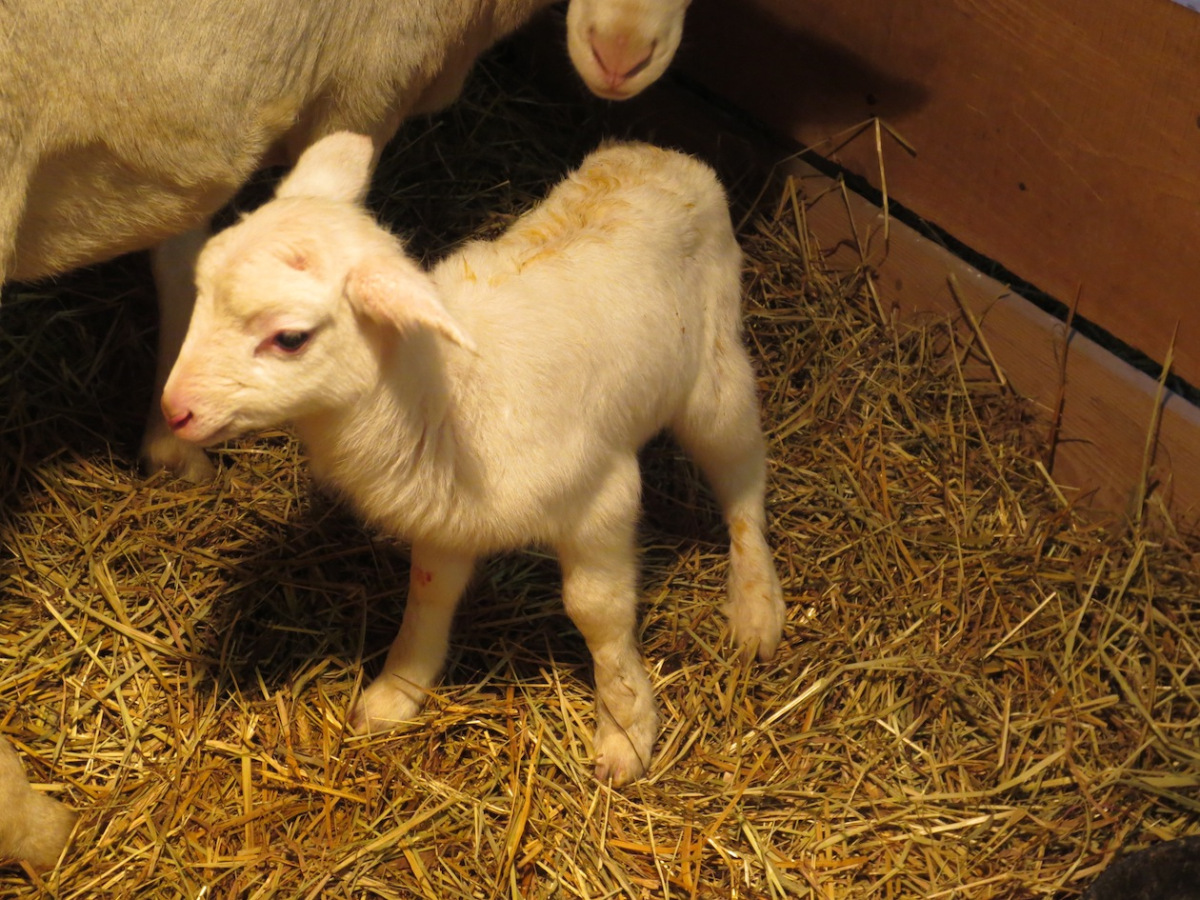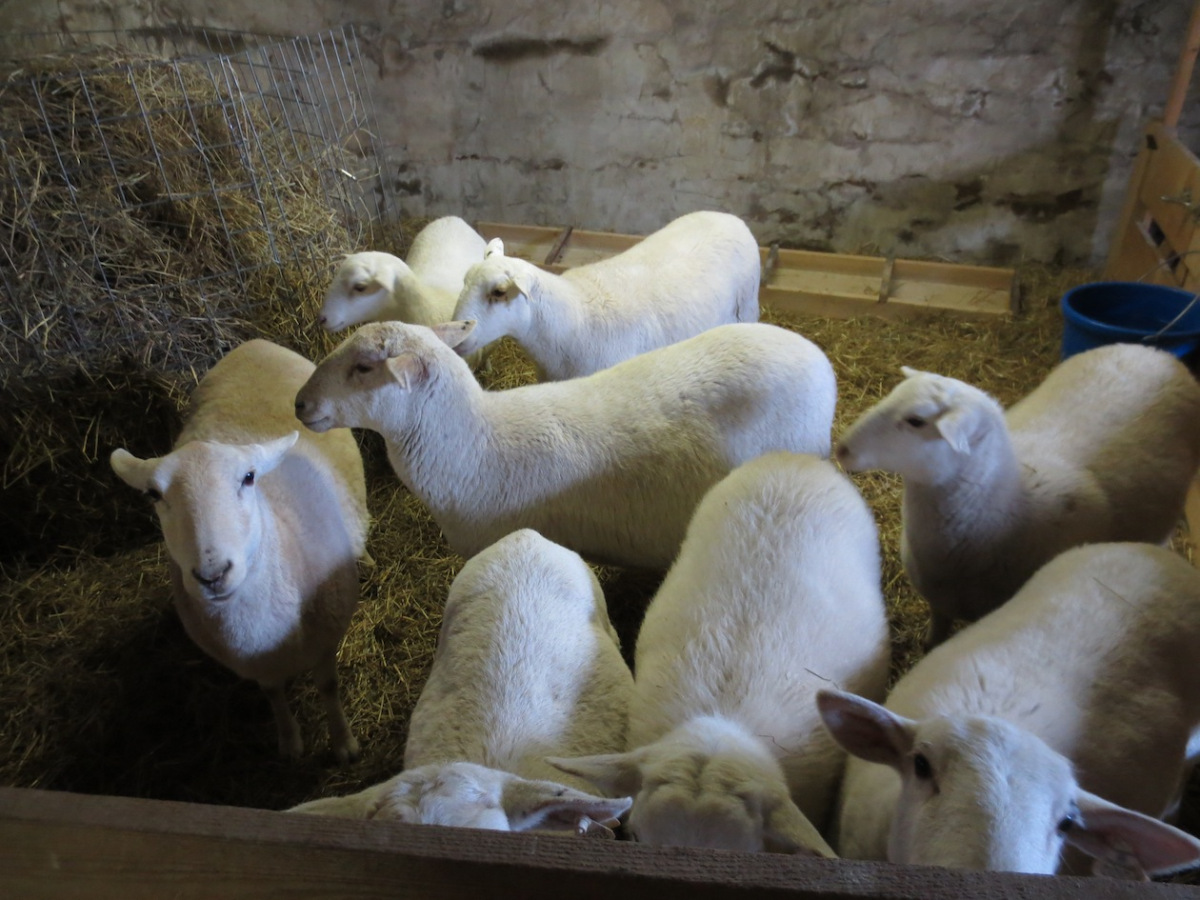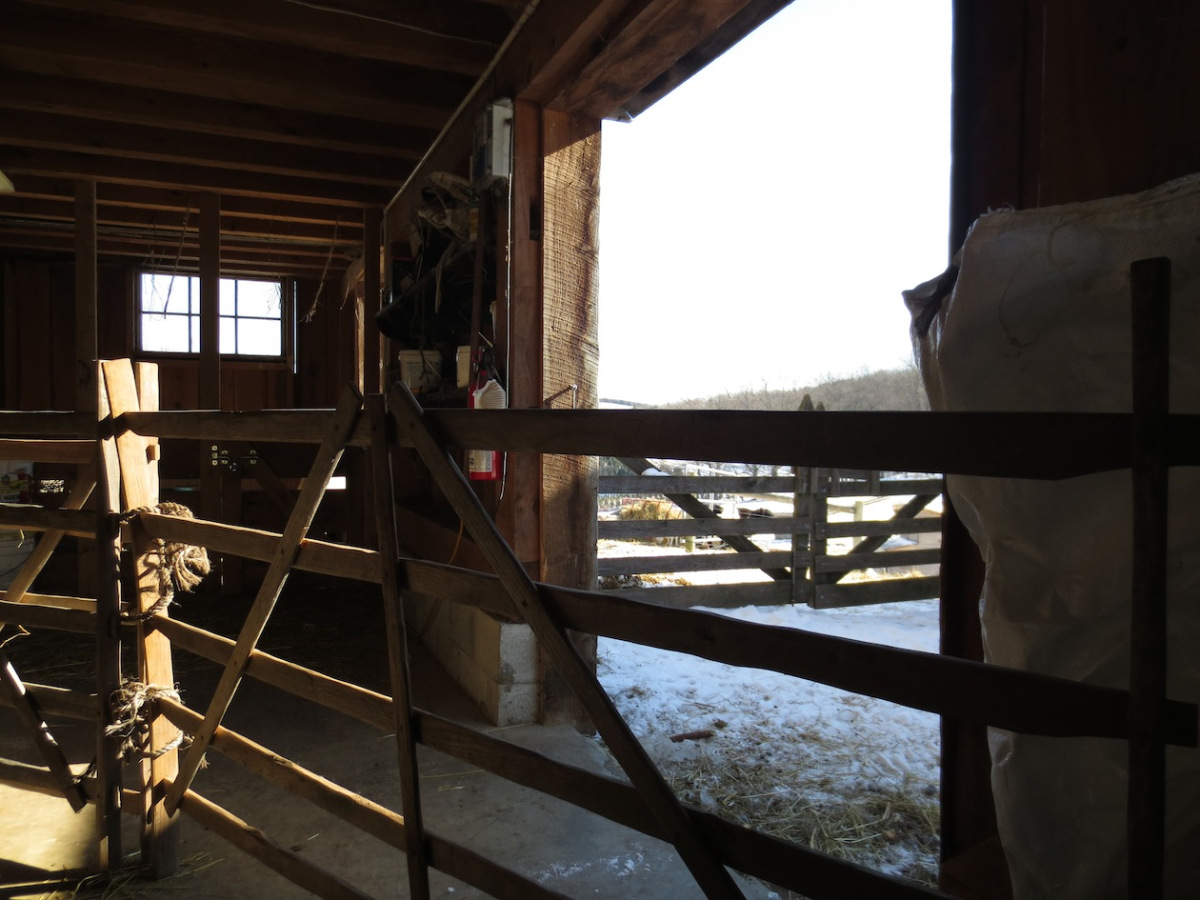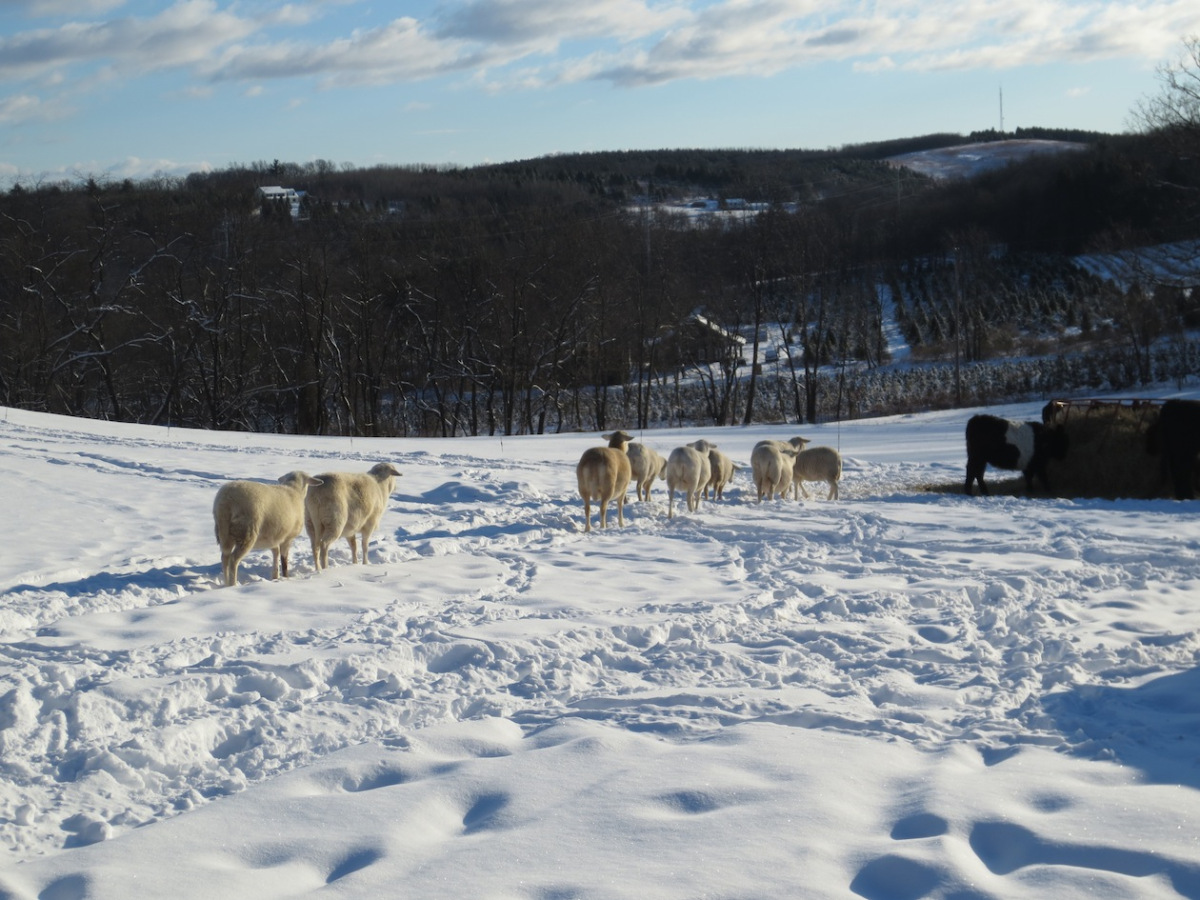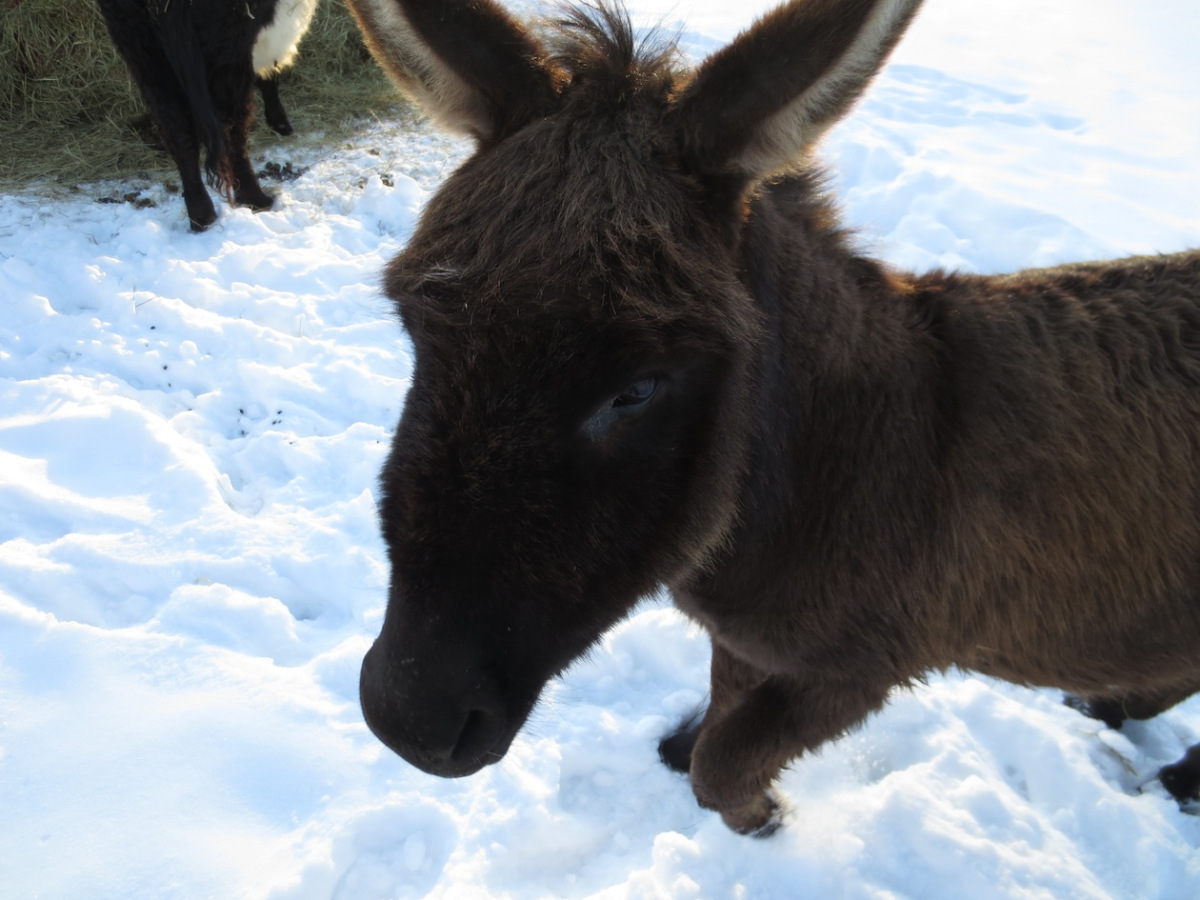Last night, while we ate dinner, I roasted two bottom round roasts, the last two in the freezer.This lean, boneless roast, also know as a rump roast is cut from the upper part of the outer leg (round). Because it its not very tender, I put the salted roasts in a 275' oven until the meat thermometer read 125'. After I removed it from the oven, the meat thermometer continued to rise, into the low 130's, perfect medium rare. Before bed, the meat was cool enough for storing in the refrigerator. The pan drippings were a treat for the barn cats.
This morning I trimmed the meat of fat, much to the delight of the dogs, and dusted off the slicer. My ebay purchased US Slicing Machine is the enamel and chrome monster that sits in the corner of my counter;it is perfect for across the grain, thin slices that we like for sandwiches. I placed individual portions of beef on waxed paper on a cookie sheet and put them in the freezer By lunchtime the portions will be ready to put in a container for storage. The thicker bits of meat, too small for the slicer but too thick for a sandwich will be be featured at dinner in a rice, greens and beef dish.
When we first started putting 1/2 a cow in the freezer I was daunted by the unfamiliar cuts of meat. My early cooking years did not include many roasts so I had alot to learn, a whole freezer full of learning. With plenty of research I learned that some cuts of meat have multiple names, all with their own best method of cooking. Armed with an accurate, digital meat thermometer, a sharp knife, and entries from Cook's Illustrated magazine and Pure Beef by Lynne Curry (BTW-my favorite resource, have loved 16 of the recipes, still working our way through the book and my freezer), I am learning to cook from most of the cow.







